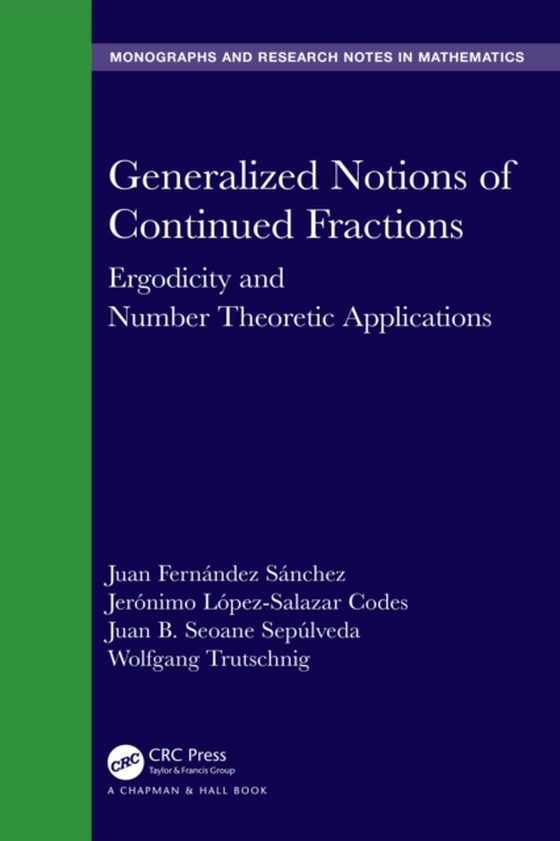
Generalized Notions of Continued Fractions e-bog
436,85 DKK
(inkl. moms 546,06 DKK)
Ancient times witnessed the origins of the theory of continued fractions. Throughout time, mathematical geniuses such as Euclid, Aryabhata, Fibonacci, Bombelli, Wallis, Huygens, or Euler have made significant contributions to the development of this famous theory, and it continues to evolve today, especially as a means of linking different areas of mathematics.This book, whose primary audience ...
E-bog
436,85 DKK
Forlag
Chapman and Hall/CRC
Udgivet
20 juli 2023
Længde
142 sider
Genrer
PBCH
Sprog
English
Format
pdf
Beskyttelse
LCP
ISBN
9781000907582
Ancient times witnessed the origins of the theory of continued fractions. Throughout time, mathematical geniuses such as Euclid, Aryabhata, Fibonacci, Bombelli, Wallis, Huygens, or Euler have made significant contributions to the development of this famous theory, and it continues to evolve today, especially as a means of linking different areas of mathematics.This book, whose primary audience is graduate students and senior researchers, is motivated by the fascinating interrelations between ergodic theory and number theory (as established since the 1950s). It examines several generalizations and extensions of classical continued fractions, including generalized Lehner, simple, and Hirzebruch-Jung continued fractions. After deriving invariant ergodic measures for each of the underlying transformations on [0,1] it is shown that any of the famous formulas, going back to Khintchine and Levy, carry over to more general settings. Complementing these results, the entropy of the transformations is calculated and the natural extensions of the dynamical systems to [0,1]2 are analyzed. Features Suitable for graduate students and senior researchersWritten by international senior experts in number theoryContains the basic background, including some elementary results, that the reader may need to know before hand, making it a self-contained volume
 Dansk
Dansk

